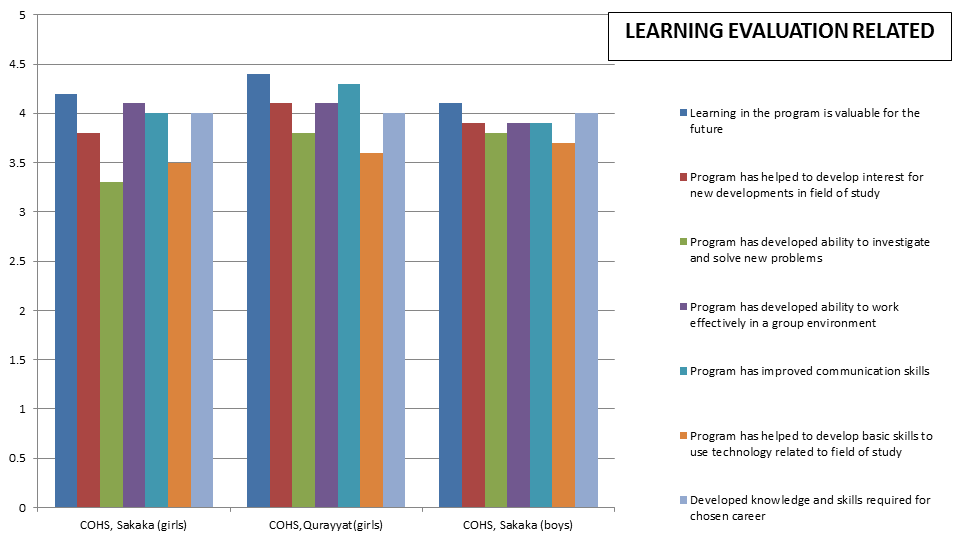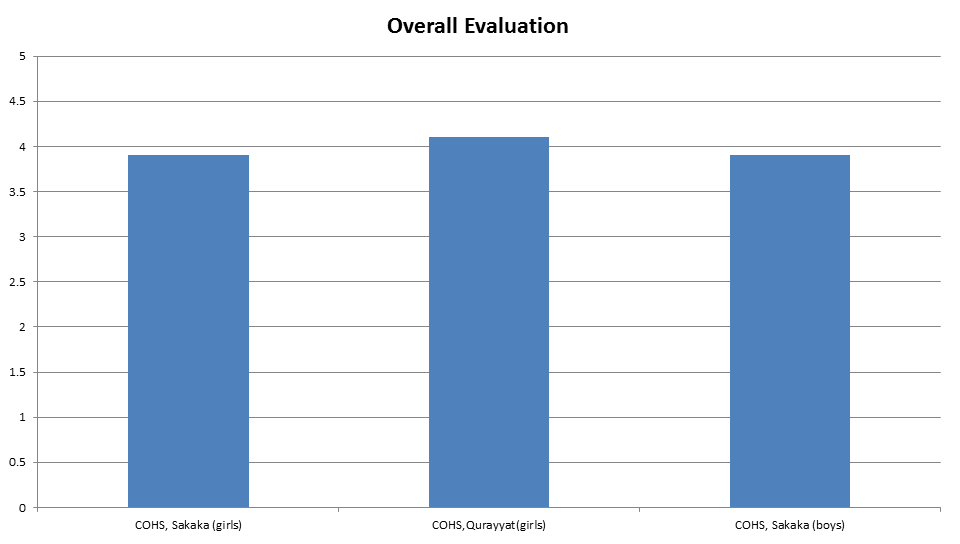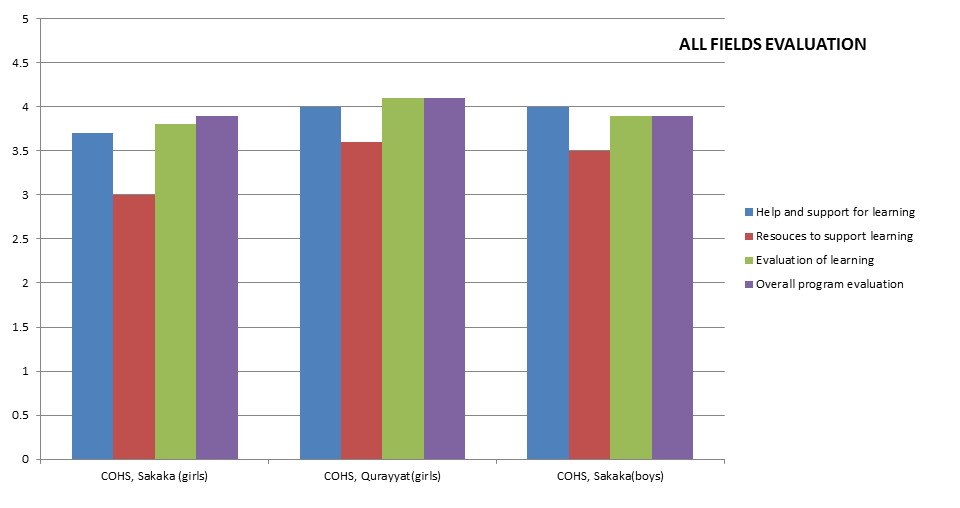


Theme
Trends in curriculum planning and development
Category
Curriculum evaluation
INSTITUTION
Al Jouf University

Providing quality education will and should always remain the basic focus of any university in its mission to be a leader in the field of education. There is a growing demand for quality education in the healthcare sector and the ability of the academic staff to forge a collaborative relationship with the healthcare professionals so as to promote a healthy environment for patient care.
A core objective is to prepare health care professionals who provide a high standard of patient-centered care and maintain current knowledge and practice skills throughout their career. Quality education is greatly enhanced when the institution establishes standards for teaching excellence, creates an environment for optimal learning as an essential element for academic achievement and develops valid and reliable methods to assess and evaluate it.
The primary source of evidence used to evaluate teaching excellence of a program is through the end users - past and present students
The program evaluation survey is one of the several surveys designed by the NCAAA in order to evaluate and improve the academic performance of programs in colleges of universities and departments within a college.
The student evaluates this survey in an anonymous manner and has to be done by the students after successful completion of their study at the college level or at the internship (imtiyaz) level
The college of Health Sciences conducted this survey for departments in colleges of Health Sciences within Jouf University. These included the College of Health Sciences for boys situated in Sakaka city and Colleges of Health Sciences for girls at Sakaka and at Qurayat city. The departments included Pharmacy, Medical Laboratory, Nursing and Medical Secretary at the boys college while Medical Laboratory and Nursing at the girls colleges. These colleges award a diploma to the successful candidates and graduates are qualified as technicians in their respective field of study.
The program evaluation is divided into three sections and evaluates several parameters within each section. The students have five options of evaluating each parameter from entirely agreeing through completely disagreeing with the said parameter.
The first and third section of this evaluation deals with the academics of the program while the second section stresses on the infrastructure towards running the program.
The first section is divided into seven questions and is related to the instructors (faculty) teaching at the program and queries about their knowledge, ability to encourage, instill knowledge and to adapt to student needs while teaching the pupils undertaking the program.
The second section revolves around infrastructure parameters with respect to academics like classroom, computing and library facilities and includes queries towards facilities for religious observances and extracurricular activities including sports and other recreational activities.
The third section is dedicated towards the capability of the graduates to provide good service to the end users – herein the patients and the society at large and stresses on the students understanding of the program and whether it has been motivating enough to be a good health care provider.
The queries are listed in Table 1





The survey results suggested a good level of knowledge and ability to impart knowledge among the instructors (faculty) delivering the courses to the students of the program.
The faculty however needs to create an environment where the graduate is enthusiastic and develops interest in his field not only to enhance their knowledge but also to focus on higher order thinking skills to solve several patient related problems. The faculty should also be providing clear goals to the student so as to make his selected professional career a long, fruitful and productive one.
The survey points out to several areas of improvement with respect to infrastructure, major among them being library facilities, computing facilities and facilities for religious observances.
The field experience of the students also does not seem up to the mark and needs special emphasis and improvement by the training staff who need to make the concepts clear and to adapt to students needs based on their comprehension level
We thank the training and field experience unit at the COHS for their continuous work in helping the programs evaluation process at the University. I thank also NCAAA for their nationwide role in quality improvement of the academic programs and institutions.
- NCAAA Program evaluation template
 Send Email
Send Email